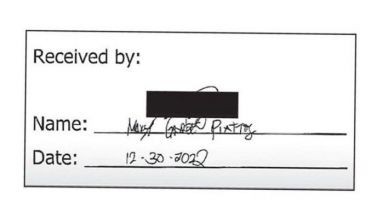No evidence on cell phone radiation’s link to cancer – FDA
MANILA, Philippines - Amid questions on the safety of mobile phones and cell sites, the Food and Drug Administration (FDA) has assured the public that there is no conclusive evidence that the type of radiation from these devices causes cancer.
According to Agnette Peralta, director of FDA-Center for Device Regulation, Radiation Health and Research, the connection between cancer and radio frequency radiation (RFR) emitted by the antennas of mobile phones, cell sites, and outdoor antenna distribution systems has not been established.
“The scientific evidence is inconclusive vis a vis the issue of cancer and exposure to this type of radiation,†Peralta said, citing the 2010 Interphone Study coordinated by the World Health Organization (WHO)’s International Agency for Research on Cancer (IARC).
The Interphone Study involved 13 countries that used a common protocol to analyze brain tumor risk in relation to mobile phone use.
“What happened? Some studies found that there was no positive association. A few found a positive association but (they were) questionable because in some of the data, it was stated that the cell phone user has been using a cell phone for 17 hours a day for many years (which was unrealistic),†said Peralta, who has been a member of International Commission on Non-Ionizing Radiation Protection, the first and only Filipino to be so.
Citing analysis done by a group of epidemiologists that include Anthony Swerdlow and Maria Feychting on the results of the Interphone Study, Peralta further noted that “although there remains some uncertainty, the trend in the accumulating evidence is increasingly against the hypothesis that mobile phone use can cause brain tumors in adults.â€
Peralta added there are other related studies but their results are “not convincing in linking mobile phone use to the occurrence of glioma or other tumors of the head region among adults.â€
Because of these, she said the IARC had placed RFR only under the “Group 2B category, which means ‘possibly carcinogenic to humans,’ and not under the Group 2A category, or ‘probably carcinogenic to humans’ and also not under the Group 1 category which is ‘carcinogenic’.â€
“They could not classify it as 2A, only 2B. What is 2B? Limited evidence of carcinogenicity. Anything is possible but is it probable? The available scientific data were not strong enough and not convincing enough to classify RFR as carcinogenic,†Peralta stressed.
Other sources of RFR
Peralta explained that the RFR coming from mobile phones and cellular sites is actually the same type of radiation transmitted by the antennas of radio and TV stations, radar systems, cordless phones, walkie-talkies, wireless fidelity or Wifi routers, computer wireless adapters, and wireless baby monitors.
“Some people have said that they would stop using their TV or radio to minimize their RFR exposure. But this action would be useless because RFR is all around us, whether or not one turns on one’s TV or radio,†she noted.
Even the extremely low frequency magnetic fields from electric power lines and all wires carrying 50 or 60 hertz electric current have also been classified under Group 2B for specific cancers. Others in the 2B category are coffee, gasoline vapor, gasoline engine exhaust, and fermented vegetables.
“Electricity has been a part of modern life for over 100 years. Does one now stop using electricity? If it can cause childhood leukemia, there should have been an unusual increase in the incidence all over the world already,†she added.
Safety standards
The only proven major harmful effect of RFR is the increase in temperature or heating, if exposed to very high levels.
But the actual exposure to RFR levels from cell sites and cellphones are well below the allowable limits of exposure to members of the public that have been set by the Department of Health (DOH).
Peralta said the “relevant exposure limit†for the public is much lower than that for workers. However, workers will also not be exposed to harmful RFR levels if they follow safe working procedures.
She said the DOH’s RFR exposure limits strictly follow international standards. Also, the FDA does “desktop safety evaluation†of all proposed cellular sites of telecommunication companies. On-site measurement of RFR radiation levels is also done for representative sites.
The RFR desktop safety evaluation report done by the FDA is one of the requirements of the National Telecommunication Commission for the license to operate cell sites, but the permit to construct is given by the local government units.
There are certain requirements that companies must comply with, like submission of antenna specifications, installation of a perimeter fence or appropriate structures to prevent unauthorized access, warning signs, and restrictions in the access to the antenna tower, among others.
Asked about the resistance of some residents in the establishment of cell sites in their neighborhood, Peralta said that “what the people do not realize is that the farther away from a cell site a person using a mobile phone is, the higher the power of the RFR emitted by the cell phone antenna.â€
“If you are closer to the cell site, the lower is the power of the RFR that’s emitted by your cell phone. Why? Imagine if I’ll throw a ball pen at you and you are near me, I will throw it with a low power. But if I were to throw it to someone farther away, I have to throw it with a higher power,†she added.
Peralta also said that further research is still ongoing abroad in the area of RFR effects, “especially because more children are now using mobile phones and they will be exposed to this type of radiation for more years of their life.â€
- Latest
- Trending




























